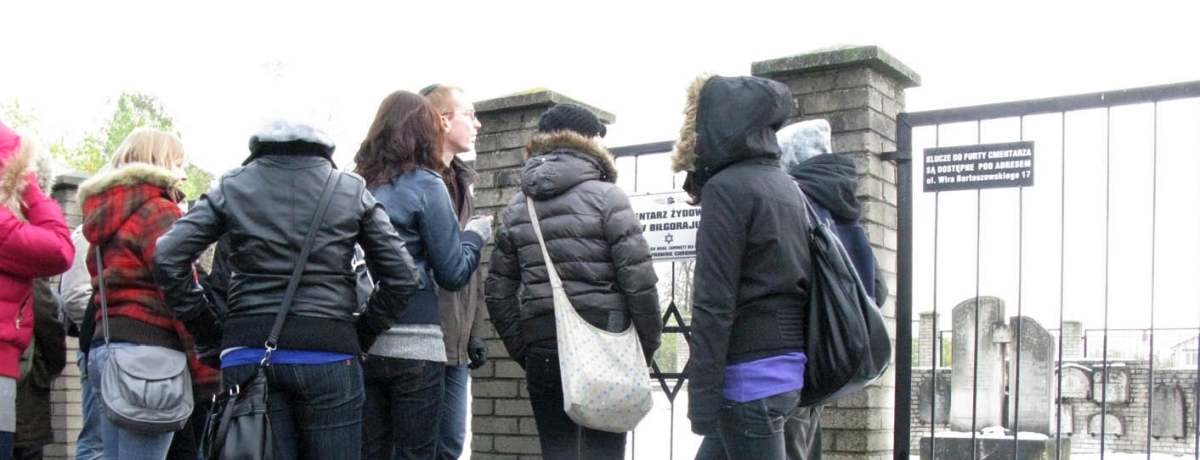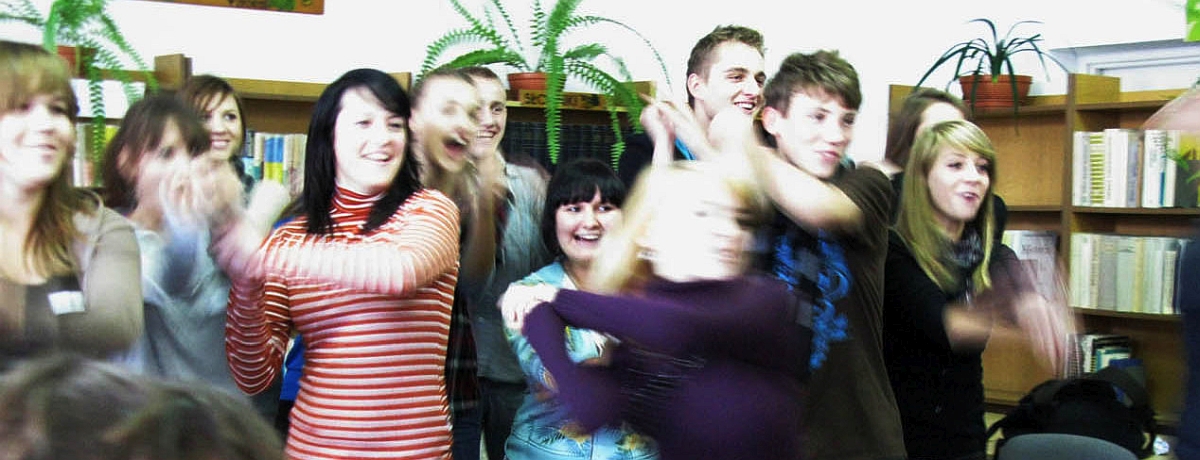Biłograj
United Nations High School


A smiling blonde with short hair is first to take the floor. She welcomes with confidence those who came to the walking tour “Following the footsteps of Jews from Biłgoraj”. Today, the high school students take their peers on a tour around old Biłgoraj which to its most famous citizen, Isaak Singer, was a town “with a distinct smell of fresh milk and a bread from an oven, a town with an unique serenity”; and “looked like all medium size towns in Poland. Low wooden one-floor houses built of brick, and with a shingled roof” to Abraham Kronenberg.
Because the high school students specialized in journalism, their familiarity with a camera and their flair for the field were quite noticeable. They were well prepared for the tour. They knew that Jews probably arrived to Biłgoraj as early as in the second half of the 14th century, although the Jewish community was established only in the 17th century.
They knew that Jews constituted a significant part of the town’s population, as confirmed by the fact that in 1611 the market day was shifted from Saturday to Thursday because of Shabbat. Jews were merchants, they produced beer, they were bakers, shoe makers, goldsmiths. When Biłgoraj was under the Austrian Partition, Jews were assigned German surnames. From that moment their names were Goldman, Szajnwald, Berliner, Engel, Enstein, Zylberman. Before the outbreak of the Second World War, they constituted 60% of the population of Biłgoraj. They run shops with colonial goods, drugstores, drinking dens, beer cellars and canteens. The market square, Lubelska Street and Frampolska Street were in 90% inhabited by Jews.

The workshops organised by the School of Dialogue got high school students from Biłgoraj interested in the history of Jews of their town. They talked to the oldest woman living in Biłgoraj about everyday life in shtetl, they found photographs of Biłgoraj from the first days after the bombing in September 1939, including the photographs of the ruined synagogue complex, impossible to find on the Internet at that time. They prepared brochures presenting traces of Jewish presence in their town. A group of volunteers cleaned the cemetery before the walking tour.
A tall boy with good diction tells the tour participants about the synagogue square, today being the crossroads of Lubelska Street and Nadstawna Street.
Students show photographs of the non-existing synagogue but manage to identify the exact place where it used to stand, even though a residential building was erected there in the 1950’s. The next stop of the tour is the place where a Jewish print shop once stood. The publishing house from Biłgoraj had published dozens of religious books over the years and made the town extremely famous in Europe and America. Students also went to the cemetery and to the Singer’s bench monument in the park. Everybody wanted to get a photo of it. Braving the cold, as the weather was cold on the day of the tour, they returned to school. Their peers will further commemorate Jewish community that once lived in Biłgoraj, the place about which Isaak Singer wrote: “I was in paradise and had only one wish: not to be ever expelled from here…”

School:
United Nations High School
Students:
2nd year students
Teacher:
Teresa Czaporowska
Educators:
Tomasz Borowy, Jarosław Ziółkowski
Program co-financed from the funds granted by The Rothschild Foundation Europe.

In appreciation to Friends of the Forum for supporting the School of Dialogue educational program.
